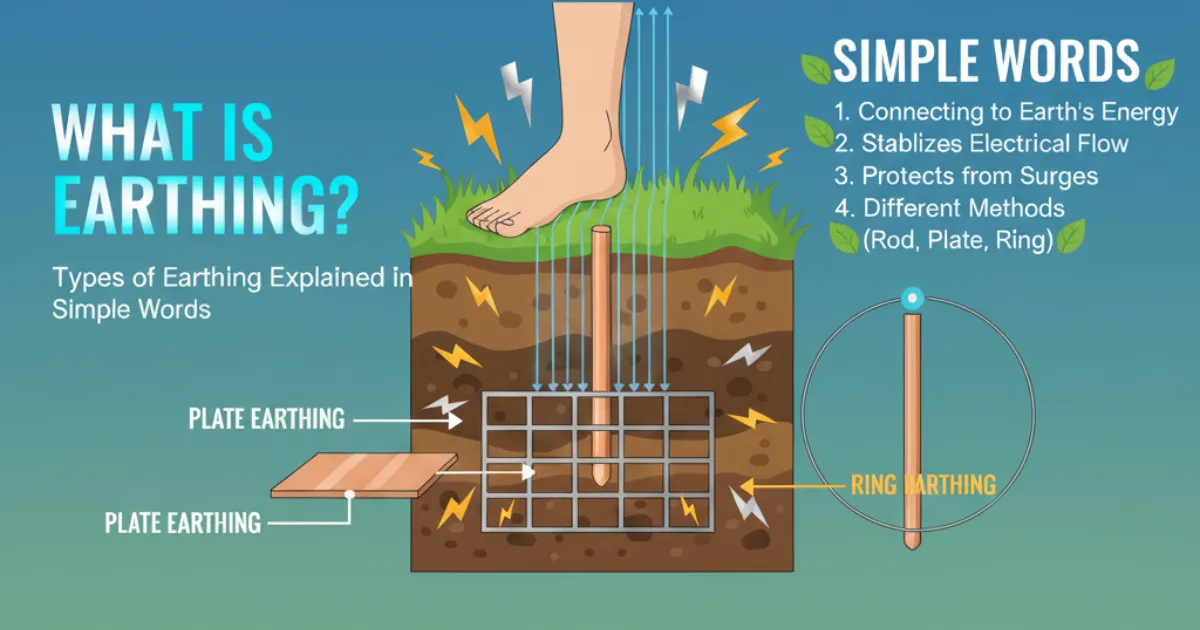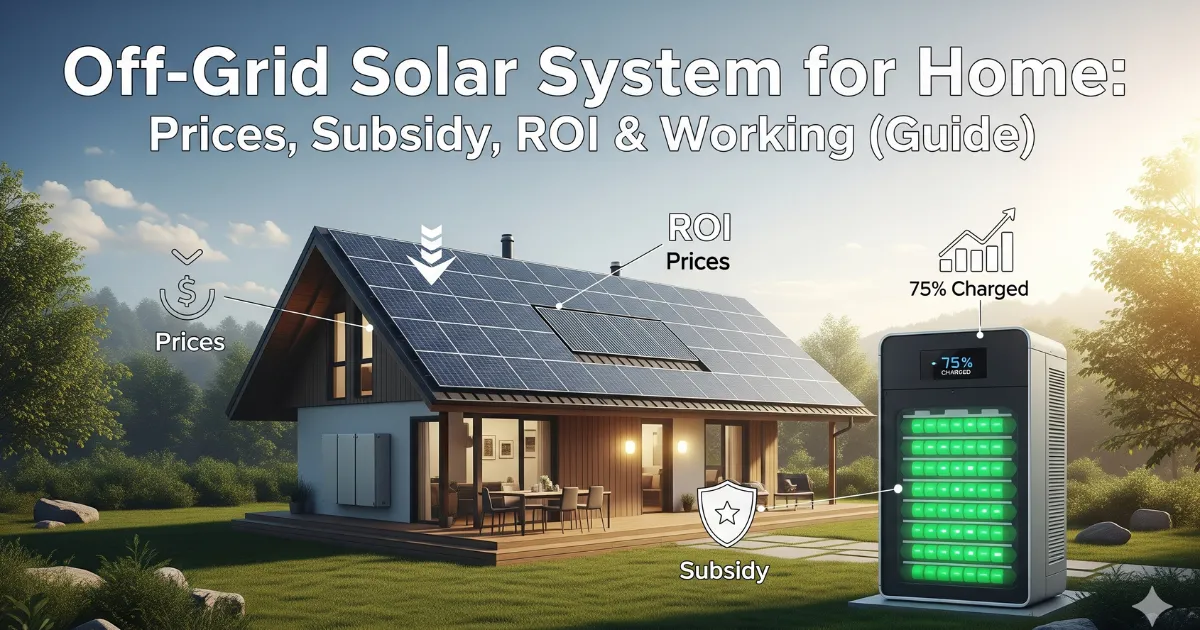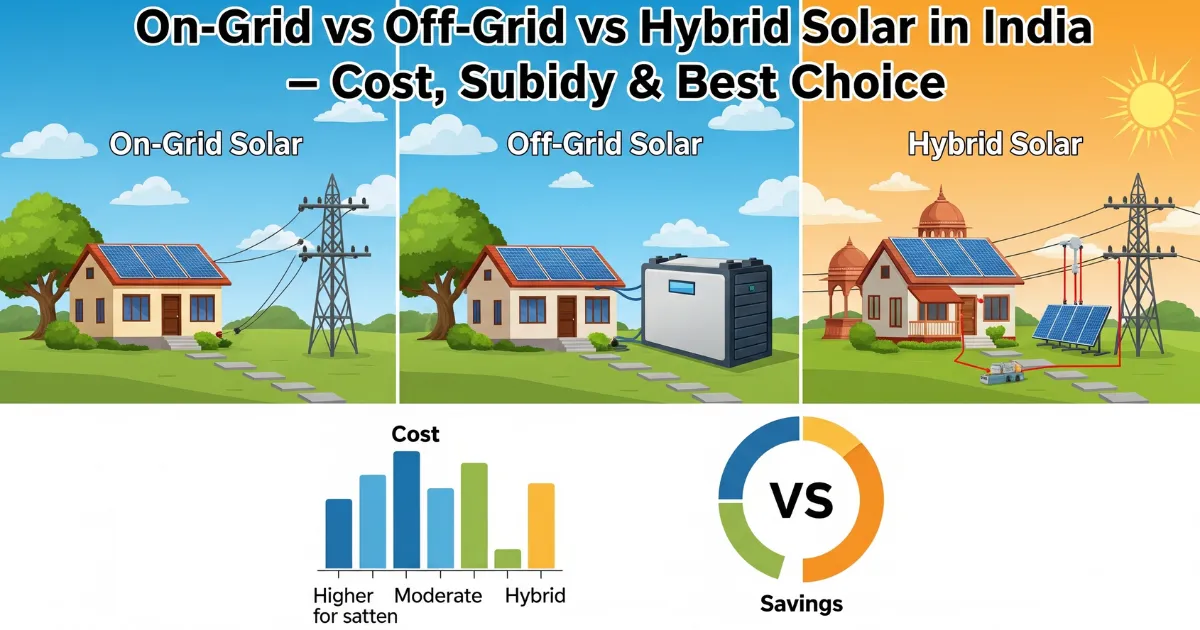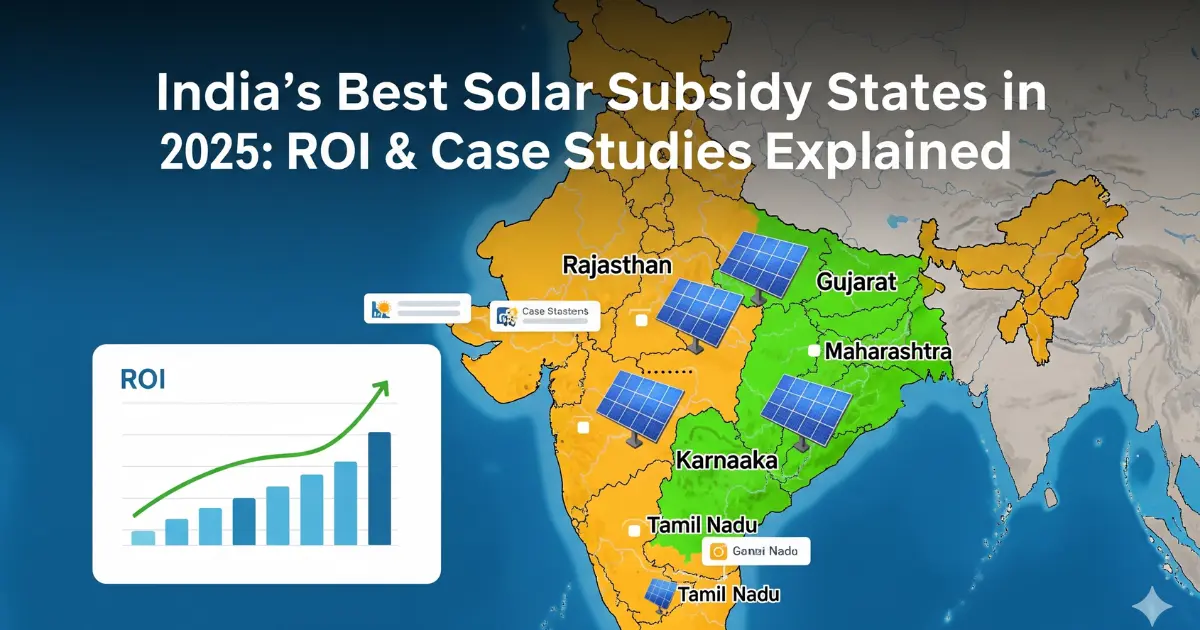Introduction
With electricity prices in India rising steadily, many homeowners are switching to rooftop solar systems to cut costs. A 4kW solar system is one of the most popular choices, as it can comfortably power a medium-to-large household with multiple appliances, including air conditioners, refrigerators, washing machines, and more.
But how much does a 4kW solar system price in India in 2025? What subsidy can you get from the government? And what is the real return on investment (ROI)?
This guide breaks down the cost, subsidy, savings, ROI, and real-life case studies, so you can decide if a 4kW solar system is right for your home.
What is a 4kW Solar System?
A 4kW solar system generates around 16–18 units of electricity per day, or about 480–540 units per month, depending on sunlight conditions. This is enough to reduce or eliminate the electricity bill for a household that spends ₹4,000–₹6,000 per month on power.
A standard 4kW system includes:
- 10–12 solar panels (400W each)
- 1 inverter (on-grid, off-grid, or hybrid)
- Mounting structures and wiring
- Optional batteries (for backup in off-grid or hybrid systems)
4kW Solar System Price in India (2025)
The cost of a 4kW solar system in India depends on the type you choose:
| Type of Solar System | Features | Price Range (2025) | Best For |
|---|---|---|---|
| On-Grid | Connected to the grid, no batteries, supports net metering | ₹2.8 – 3.2 lakh | Homes with stable grid supply |
| Off-Grid | Works independently, uses batteries for backup | ₹3.6 – 4.0 lakh | Areas with frequent power cuts |
| Hybrid | Combination of on-grid + battery backup | ₹4.2 – 4.8 lakh | Homes wanting both savings & backup |
Most homeowners choose on-grid systems since they are cheaper, maintenance-free, and qualify for government subsidies.
How Much Power Does a 4kW System Generate?
- Average generation: 16–18 units/day
- Monthly generation: 480–540 units
- Annual generation: 5,800–6,500 units
This is enough to power a medium-sized household with multiple fans, lights, a refrigerator, 1–2 ACs, and appliances like washing machines or water pumps.
Government Subsidy for 4kW Solar System (2025)

The Indian government offers subsidies under the PM Surya Ghar Muft Bijli Yojana. As of 2025:
Under the Rooftop Solar Programme Phase II, the Indian government provides subsidies for residential installations.
- Up to 3kW: Flat subsidy of ₹30,000 – ₹60,000
- Above 3kW to 10kW: Additional subsidy of ₹6,000 per kW
- Maximum subsidy cap: ₹78,000 per household
For a 4kW system, you can get a subsidy of about ₹66,000 – ₹72,000, depending on DISCOM rules.
So, a 4kW on-grid system costing ₹3 lakh could come down to just ₹2.3–2.4 lakh after subsidy.
ROI & Payback Period
The ROI of a solar system depends on how much electricity you consume and your tariff rates.
- Monthly generation: ~500 units
- Electricity savings: ~₹3,500–₹4,500/month (assuming ₹7–₹9/unit tariff)
- Yearly savings: ₹40,000–₹50,000
- Net cost after subsidy: ~₹2.3–₹2.4 lakh
- Payback period: 4.5–5 years
- Lifetime savings (25 years): ₹8–10 lakh
After the payback period, all your solar power is essentially free electricity.
Real-Life Case Studies
Case Study 1: Family in Pune
- System: 4kW on-grid solar
- Cost: ₹2.9 lakh (₹2.3 lakh after subsidy)
- Appliances Powered: 1 AC, 2 refrigerators, washing machine, lighting
- Bill Savings: Reduced from ₹4,800/month → ₹600/month
- ROI: 4.7 years
Case Study 2: Shop Owner in Lucknow
- System: 4kW hybrid solar (with batteries)
- Cost: ₹4.5 lakh (no subsidy on hybrid)
- Usage: AC + lights + billing computers during power cuts
- Bill Savings: ~₹4,000/month
- Extra Benefit: Continuous power supply
- ROI: 6.5 years (slightly longer due to battery cost)
Case Study 3: Farmer in Rajasthan
- System: 4kW off-grid solar with batteries
- Cost: ₹3.8 lakh
- Usage: Water pump + storage appliances
- Bill Savings: ~₹3,500/month + no dependence on unreliable grid
- ROI: 6 years
Factors That Influence Cost & Performance
- Location & Sunshine Hours: Rajasthan, Gujarat, and Maharashtra get the highest output.
- Panel Type: Mono PERC panels generate more power but cost slightly more.
- System Type: On-grid is cheapest; hybrid/off-grid adds battery costs.
- Appliance Load: Using inverter ACs and LED lighting improves ROI.
- Net Metering: Lets you offset excess power with DISCOM, lowering bills further.
FAQs on 4kW Solar System Price in India
How many panels are required for a 4kW solar system?
How much roof space is needed for 4kW solar?
Can a 4kW solar system run 2 ACs?
Does a 4kW system work during power cuts?
What is the lifespan of a 4kW solar system?
Inverter: 8–10 years
Lithium Batteries (if used): 8–12 years
How much can I save in 20 years with a 4kW solar system?
Conclusion
A 4kW solar system is an excellent investment for Indian households and small businesses in 2025. With subsidies reducing upfront costs, you can recover your investment in 4–5 years and enjoy 20+ years of free electricity.
If your monthly bill is around ₹4,000–₹6,000, a 4kW solar system is the perfect fit. Combine it with government subsidy and net metering, and your solar panels will not just run your home — they’ll save you lakhs in the long run.






